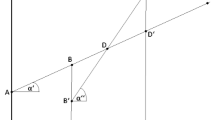Summary.
It is often asserted that the more substitutable capital and labor are in the aggregate production the more rapidly an economy grows. Recently this has been formally confirmed within the Solow model by Klump and de La Grandville (2000). This paper demonstrates that there exists no such monotonic relationship between factor substitutability and growth in the Diamond overlapping-generations model. In particular, we prove that, if capital and labor are relatively substitutable, a country with a greater elasticity of substitution exhibits lower per capita output growth in transit and in steady state.
Similar content being viewed by others
Author information
Authors and Affiliations
Additional information
Received: October 27, 2001; revised version: February 25, 2002
Rights and permissions
About this article
Cite this article
Miyagiwa, K., Papageorgiou, C. Elasticity of substitution and growth: normalized CES in the Diamond model. Econ Theory 21, 155–165 (2003). https://doi.org/10.1007/s00199-002-0268-9
Issue Date:
DOI: https://doi.org/10.1007/s00199-002-0268-9




